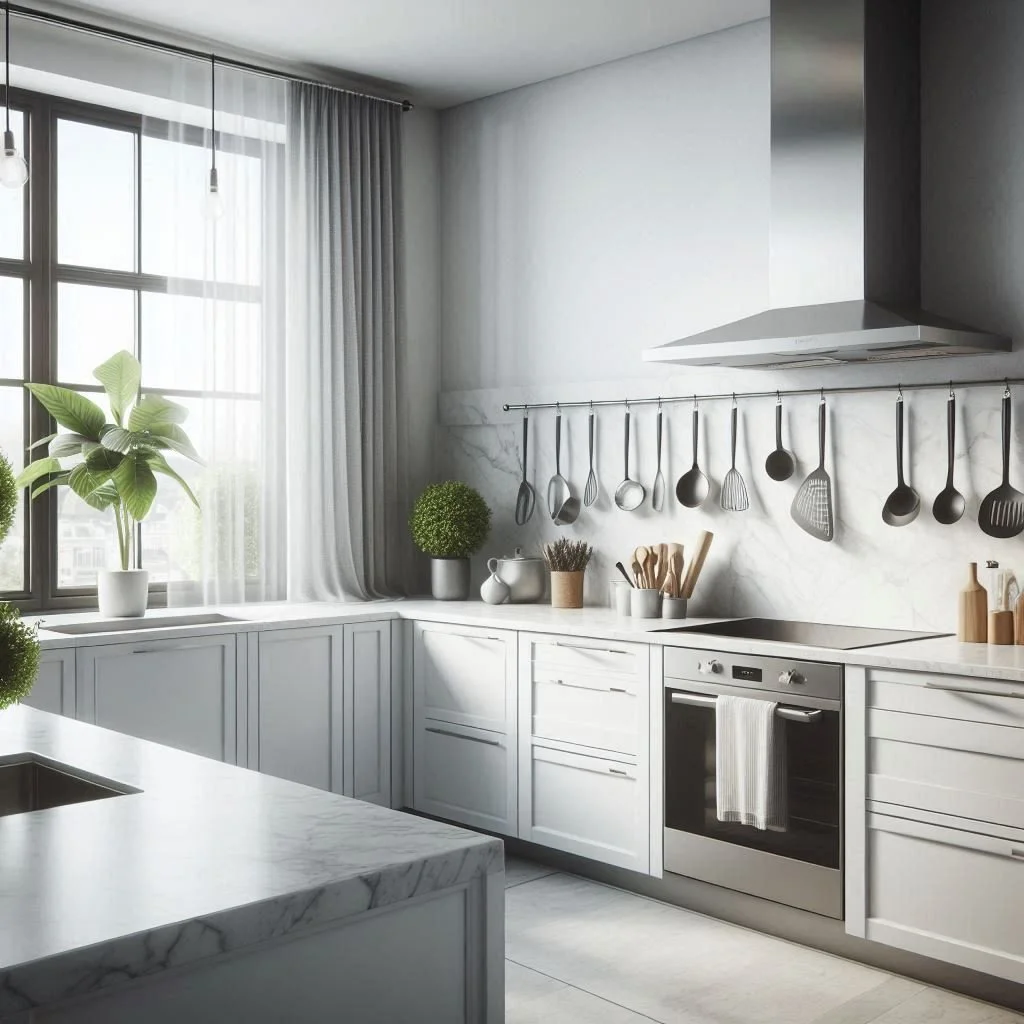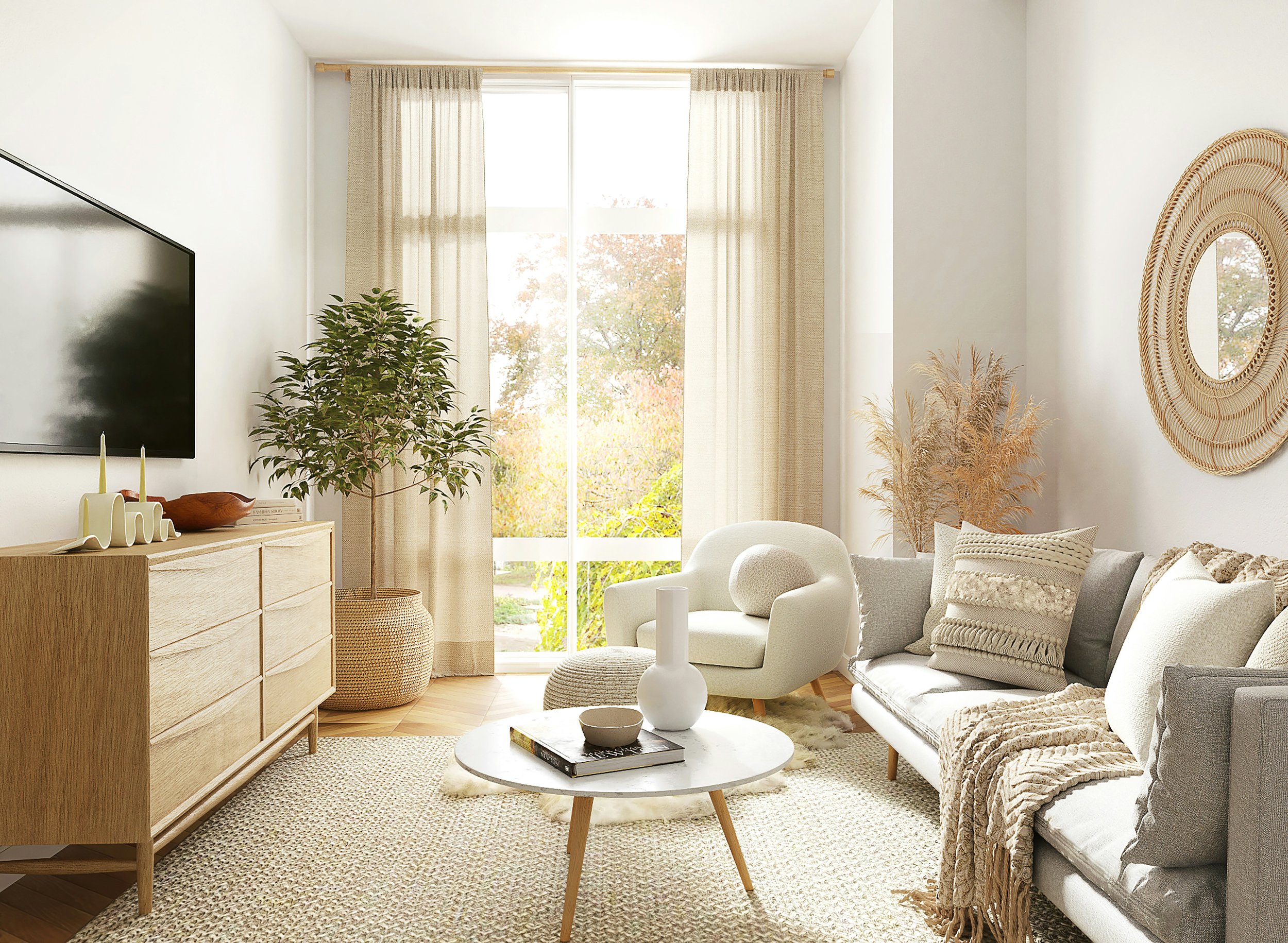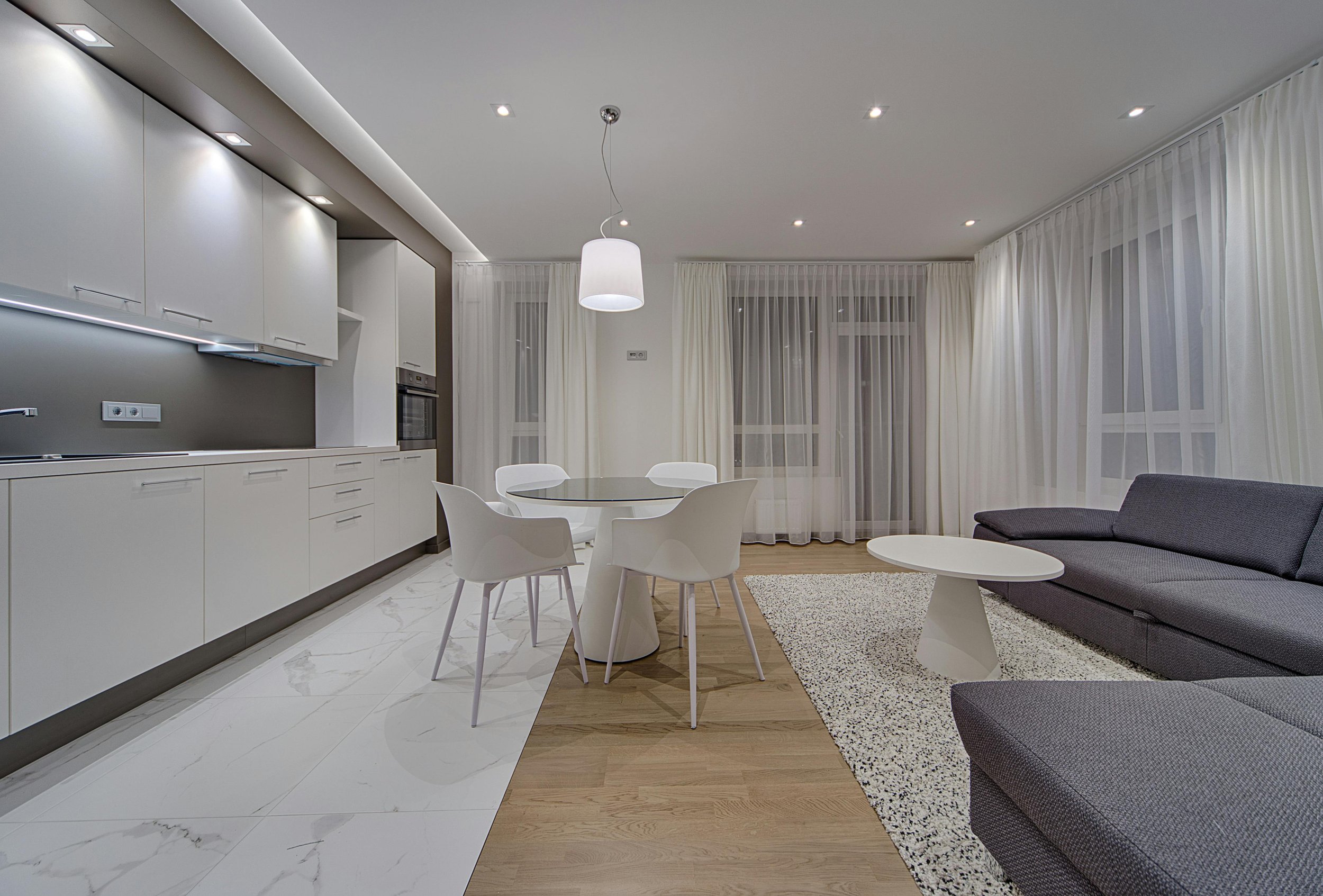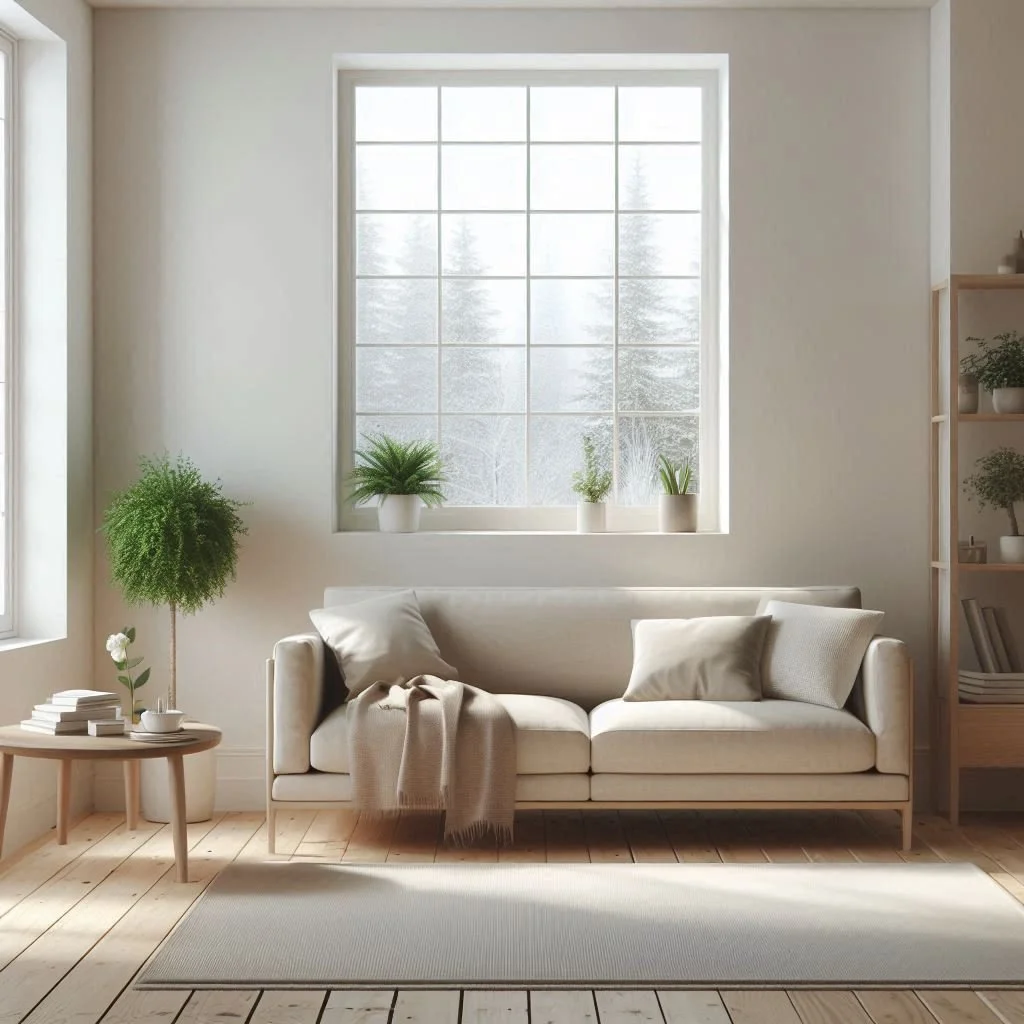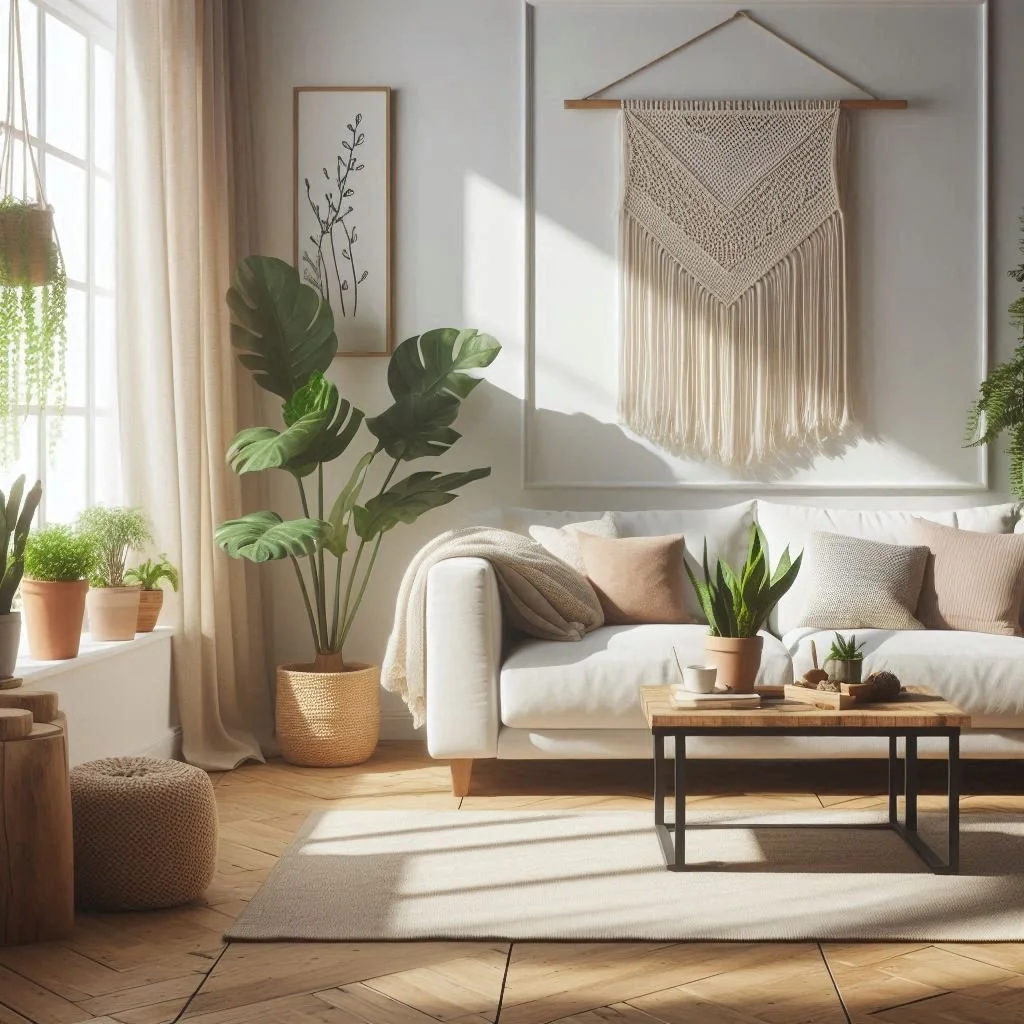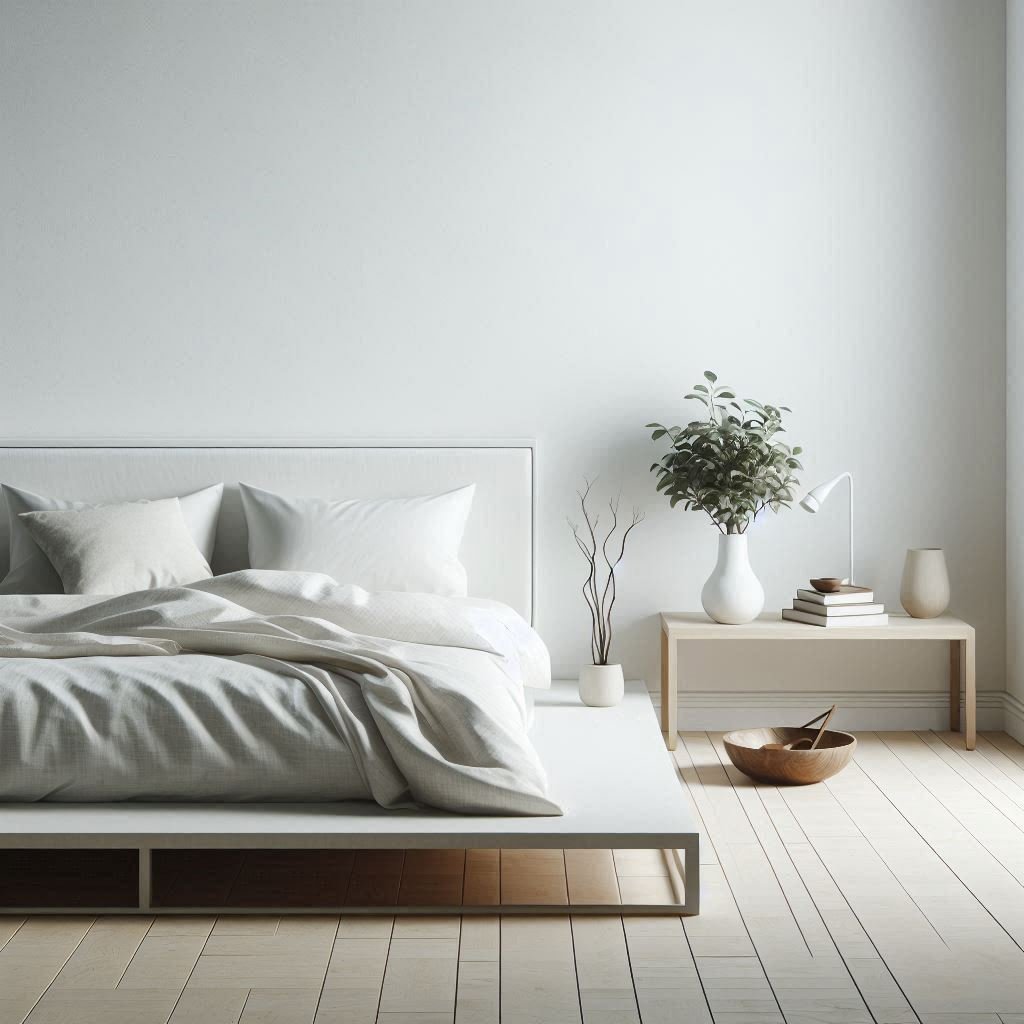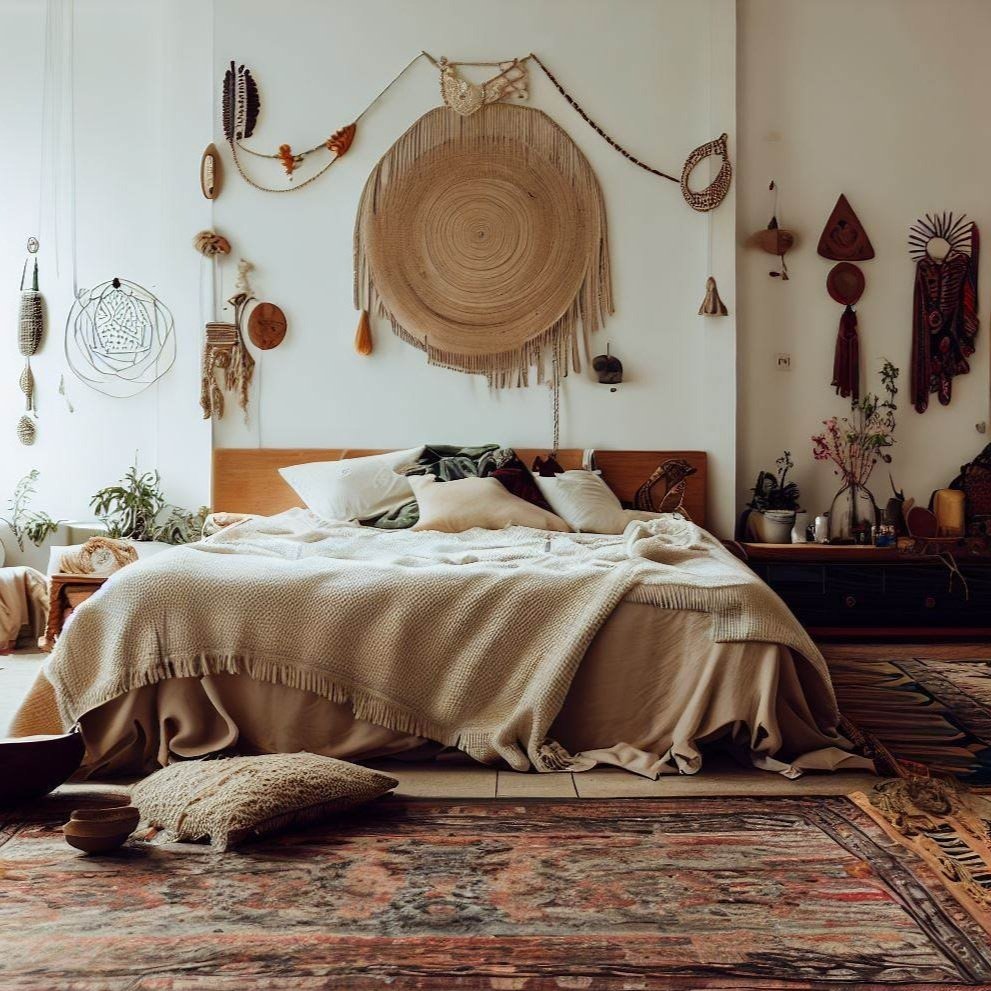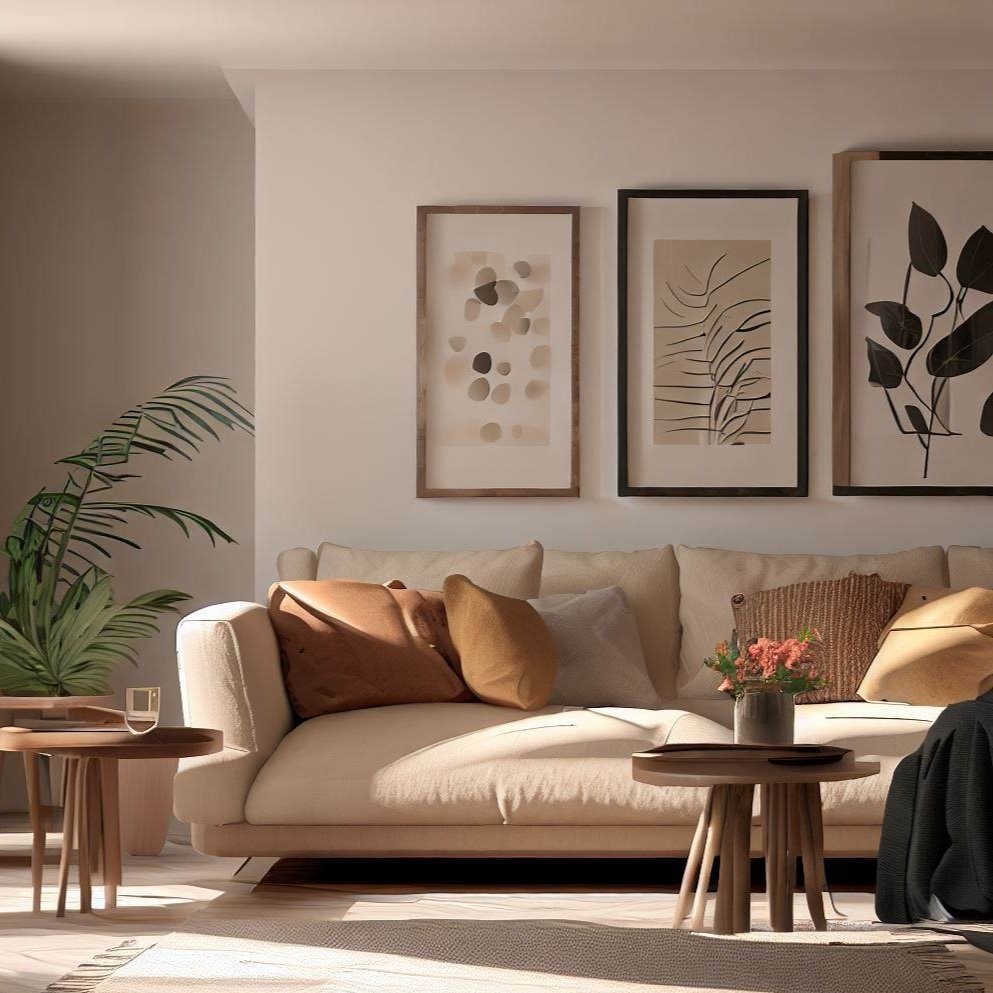Genius Makeovers for Airy and Minimalist Kitchen
Transform your space with these genius makeover ideas for creating an airy and minimalist kitchen, blending style and functionality for a fresh, modern look.
How do you feel working in your kitchen? Calm and composed or chaotic and cluttered?
The key to walking happily into a kitchen is to have a sleek, organized, and calming space—I’m talking about the Minimalist kitchen trend. This trend has been popular for several years, and rightly so.
A minimalist kitchen isn't just about aesthetics. It's to create a functional, calm environment where everything has its place, and nothing feels cramped. Whether you’re tackling a small kitchen or simply want to breathe new life into your space, incorporating a few design elements can create a more spacious feel and improve the overall vibe.
Here are some genius makeover ideas that will help transform your kitchen into an airy, clutter-free haven that makes cooking and living a whole lot easier.
7 Practical Tips to Achieve an Airy and Minimalist Kitchen
To create a minimalist kitchen, focus on reducing visual clutter, improving storage, and using light colors and materials. Here are practical, real-life makeovers that can make a big difference.
Upgrade Your Cabinets
Cabinets are the backbone of any kitchen. Upgrading them can significantly enhance the overall look. According to Boyars Kitchen Cabinets, simply refacing the cabinets can brighten up your kitchen big times. Here are a few ideas to upgrade your kitchen cabinets:
Replace Old Cabinet Doors: Old or outdated cabinet doors make the kitchen look cramped. Swap them out for simple, flat-panel doors in neutral colors to instantly modernize your kitchen. Look for designs without ornate details, as these tend to add unnecessary visual clutter.
Install Pull-Out Shelves: Deep cabinets often turn into junk zones where things get lost. Pull-out shelves allow you to access items at the back easily. These shelves are perfect for pantry items or pots and pans, helping you maintain organization and avoid countertop clutter.
Add Vertical Storage: There is a lot of space above your cabinets that often goes to waste. Add tall cabinets that extend to the ceiling. Use these for items you don’t need daily but still want to store, like serving platters or rarely used appliances. This keeps them hidden but still accessible.
Declutter Countertops
The key to an airy, minimalist kitchen is to keep them as clear as possible. Your countertops should be functional, but not overflowing with gadgets and items.
Use Appliance Garages: Small appliances like the toaster, blender, and coffee maker can clutter your countertops. Appliance garages are small cabinets or compartments designed specifically for these tools. Use them to keep your appliances out of sight but easy to access when needed.
Limit Countertop Items: Set a rule for yourself! Make sure to limit your countertop items to only 3-5. For example, you might keep a knife block, fruit bowl, and cutting board out. Everything else, including kitchen gadgets, should be stored in cabinets or drawers. This keeps surfaces clear and easy to clean.
Mount the Microwave: If you’re short on counter space, mount your microwave under a cabinet or install it in a tall cabinet. This frees up valuable countertop space and integrates the appliance into the kitchen design.
Maximize Natural and Artificial Light
Natural light can completely transform a space, making it feel larger and more open. A well-lit kitchen gives the illusion of more space, which is crucial in a minimalist design. See our article on using browns and earth tones in your kitchen for natural light warmth.
Replace Heavy Window Treatments: Keep window coverings light and simple, or opt for none at all. If you need privacy, consider sheer curtains or blinds that allow light to pass through. Avoid heavy fabrics or dark shades that can make the room feel enclosed.
Integrate Reflective Surfaces: Incorporate reflective materials to bounce light around the room. A mirrored backsplash or high-gloss cabinets can amplify the amount of natural light, creating a brighter space without the need for extra lighting fixtures.
Add Under-Cabinet Lighting: Under-cabinet lighting illuminates work surfaces without adding bulky fixtures. LED strip lights are an easy, cost-effective solution. They provide task lighting while making the kitchen feel brighter and more open.
Opt for Simple and Seamless Flooring
Flooring plays a huge role in how open or cramped a kitchen feels. For a minimalist kitchen, choose materials that contribute to a sense of flow and continuity.
Use Large-Format Tiles or Planks” Large tiles (e.g., 24x24 inches) or wide wooden planks (e.g., 7-9 inches wide) create fewer grout lines, making the space feel less busy. The fewer the lines, the cleaner and more open your kitchen will look.
Stick to Lighter Floors: Just like with your cabinets, stick to light, neutral tones for your floors. Pale woods, light grey tiles, or whitewashed options reflect light and make the space feel wider. Avoid dark or overly patterned floors, as they tend to shrink the space visually.
Consider Continuous Flooring Between Rooms: If your kitchen connects to another room, use the same flooring in both areas to create a seamless look. Using the same material creates a continuous, uninterrupted look, which enhances the feeling of openness.
Simplify Your Backsplash for a Clean Look
Backsplashes bring texture and depth to your kitchen without overwhelming the space. Minimalist kitchens benefit from simple and functional backsplashes.
Use the Same Material as the Countertops: Instead of traditional tile, consider extending your countertop material up the wall to create a seamless backsplash. This eliminates grout lines and gives a more unified look, making your kitchen feel more spacious and less visually fragmented.
Stick to Plain Subway Tiles: Choose a simple subway tile with a minimal grout line or go for a full slab backsplash made of stone, quartz, or marble. These options keep the look sleek and modern without drawing too much attention.
Avoid Accent Walls or Borders: Keep the backsplash uniform. Avoid adding accent tiles or borders that break the flow. Consistency in materials and colors helps create an airy, minimalist feel.
Lighten Up Your Color Palette
The color palette of an airy kitchen should be restrained and cohesive. Too many colors can create visual chaos and keep you from your desired minimalist look.
Choose One Primary Color for the Kitchen: To keep the kitchen from feeling busy, limit your color palette. Stick to one primary color, such as white, grey, or light beige. Use the same color for walls, cabinets, and even some appliances. This creates a unified look, making the kitchen feel more open.
Stick to Whites, Greys, and Soft Neutrals: White is the ultimate color for a minimalist kitchen, but grey, beige, and other soft neutrals work just as well. These shades open up the space and create a calming atmosphere.
Avoid Bold or Patterned Accent Walls: Stay away from accent walls in bold colors or heavy patterns. While these might work in other rooms, they add unnecessary complexity to a minimalist kitchen. Stick to simple, uniform tones to maintain an airy feel.
Keep Decorations Minimal and Functional
Less is more when it comes to decorating a minimalist kitchen. A few well-chosen items can add warmth and beauty without cluttering the space.
Limit Wall Art: If you want to hang something on the wall, choose a single large piece or a small, cohesive series. Avoid busy patterns or bright colors that can disrupt the calm, minimalist aesthetic.
Add One or Two Green Plants: Plants can bring life to a minimalist kitchen without overwhelming it. Stick to small, easy-to-maintain options like succulents or a simple herb plant. A single potted plant on the counter or windowsill is enough to add warmth without adding clutter.
Use Practical Decorations: Choose decor that doubles as storage or functionality. For example, a stylish fruit bowl or a chic knife block can enhance the aesthetic while being practical. Stick to items you use daily and avoid purely decorative objects.
